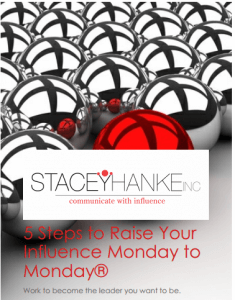Several of you have asked what S.P.A.R.K.™ is after seeing my reference to this in several blogs.
S.P.A.R.K.™ is the most effective way to:
- Help you relax and get comfortable with your listeners.
- Grab your listeners’ attention.
- Gain listener
- Remember what you are going to say.
- Increase learner retention.
- Emphasize a key point or idea.
The elements of S.P.A.R.K.™ are:
- Stories
- Pictorials
- Analogies
- References, Quotes, and Questions
- Keep them laughing
- S – Stories
A story is a way to tap into your listeners’ emotions and experiences. Be careful not to get lost in the details, making your story too long and losing your listeners’ attention. Instead, keep your story brief and to the point, ideally two minutes or less.
To make sure your story has impact, follow these steps when creating and delivering your story:
- Current state – set up your story; who is in your story and what is the situation?
- Defining moment – the turning point of your story that pulls your listener in, wanting to hear more.
- Outcome – What happened? This is the point of your story.
- P – Pictures
Words and numbers alone are not memorable, nor do your listeners want you to read to them. You can easily take a complex idea and illustrate it with a simple visual to avoid confusing or frustrating your listeners.
Whenever you use pictures or any visual support, ask yourself:
- Do my visual aids enhance listener understanding and encourage retention by illustrating my main ideas?
- Do my visual aids communicate my main ideas in a simple way?
- Do my visual aids support my message, or am I using my visual aids in place of my notes?
- A – Analogy
It is easier to explain a complex idea or concept if you can compare it to something your listener can understand.
Use only one analogy per concept, and make sure you clearly explain the relationship between the two items or concepts you are comparing. Practice explaining your analogy to a friend, a co-worker or a family member. If the explanation seems to be a struggle, do not use the analogy. For example:
Learning new communication skills and behaviors is like playing golf for the first time. At the start, it feels awkward and uncomfortable, but the more you practice, the more comfortable and confident you become, and the better your game.
4 – 5. R– References & Quotes
References and quotes add credibility to what you are saying. When using a reference, make sure you acknowledge the source. For example, “According to the Harvard Management Communication Letter, the most frequently missed opportunity in business presentations today is the presenter telling the audience how they feel about the topic.”
- Questions
A question is useful to quickly identify the needs of your listeners. For example, if you were delivering a message about marketing strategies, you might ask, “What is your greatest challenge to identifying your target market?” The key is to identify a question that is most likely to elicit the emotion you want to evoke or that begins the general message you want to convey.
- K – Keep Them Laughing
Laughter is the best medicine for all of us and creates an instant connection with your listeners. Use your natural humor. A safe place to start is making fun of yourself. Exaggerate everyday funnies or embellish your own experiences.
Our words alone don’t cut it. Always begin with a S.P.A.R.K.,™ then pepper these throughout your message to drive your point home, re-engage your listener and influence action.
Drop me a note to share how you apply S.P.A.R.K.™ during your conversations for one week. Tag me on my Facebook page.
If you missed one of our posts, please visit us online.
Click Here to Receive our 5 Steps to Raise your Influence
What Achievers Read:
How to Be Heard: Secrets for Powerful Speaking and Listening, by Julian Treasure





